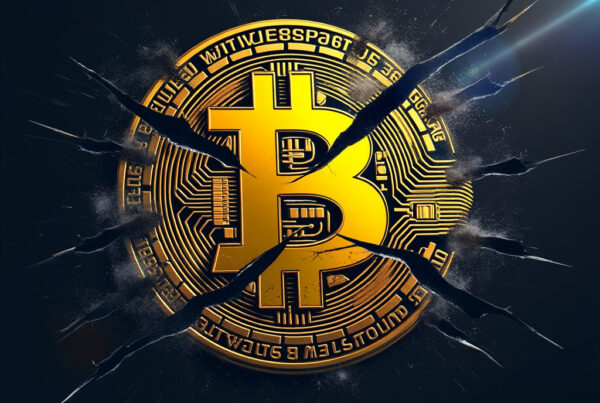Since its launch last year, TRON has been steadily gaining a reputation of being one of the world’s leading cryptocurrencies on the market. As of this writing, Tron holds the 10th spot based on market capitalization. But what exactly is Tron? What has led to this massive adoption? Who are the people leading this charge and why? In this article, we’ll dive into the specifics of what TRON is, what services they provide, and the people behind the scenes making it happen.
What is TRON?
Tron is an open source blockchain-based project that was initially attempting to alter the entertainment industry via its decentralized platform. Following the rapid growth and massive adoption of the Tron protocol, and realizing that their vision had a broader scope than just entertainment, Tron is now focused on changing the internet as a whole. Their goal is to decentralize the internet. Tron originated as an ERC20 token on the Ethereum network, but has since set out to develop and implement its own smart contract blockchain to rival its predecessor. Unlike Ethereum, Tron does not use Gas, but instead uses bandwidth. This makes Tron much more viable for the developers and users alike as the cost per transaction essentially disappears. To further cement its position in the cryptosphere, Tron has acquired Bittorrent, a peer-to-peer file sharing protocol which is used by over 100 million users.
”Tron is now focused on changing the internet as a whole. Their goal is to decentralize the internet.
Solutions Offered by TRON
When it comes to digital media, there is currently an intermediary that is involved in providing the service. Intermediary firms provide a platform to facilitate the digital data sharing and, therefore, charge a fee from both the developers and customers. Whether we are looking for a movie, a song, or a video game, the content has to be attained from these firms. The same applies for the “free” short video online content that we are so used to watching. Services like YouTube exist so that content creators can reach their intended audience. Unfortunately, the content that they provide is bound to the Terms and Conditions set forth by this intermediary. In this example, the content creator is stripped of a large portion of the advertising revenues in exchange for the service that is rendered. For small-scale content creators who are just starting out, it is very unlikely that the viewership will generate any revenues whatsoever. In a decentralized platform such as Tron, fairness is embedded into the platform so that both large and small scale content creators get their fair share as a result of eliminating the intermediary, in this case Youtube. By utilizing TRON, the developers can share their digital content with users and retain all of the revenues- No need to pay the stockholders.
[Tweet “In a decentralized platform such as @Tronfoundation , fairness is embedded into the platform…”]TRON also ensures the security of the data via the irrefutable nature of blockchain. It safeguards the users’ privacy by enabling users to maintain their personal digital footprint. In other cases, firms such as Google, Facebook, and Amazon, amongst many others, earn huge revenues through the tracing and sale of people’s digital prints.
Digital assets will soon be a common term, especially within the Tron network. To easily explain this concept, video games may be the best way to open the blinds. In today’s app driven world, games thrive off selling you digital perks in order for you to complete a task or level. If you can’t beat Mr. Potatohead, you buy the potato slicing tomahawk slingshot. Are you really buying anything? You are simply paying to use a digital item within that game which goes to waste once you get bored of the game. In a decentralized protocol like Tron, games can easily have digital assets that you actually own on the blockchain. If you get bored of playing Kill Potato (yes, I made this up), you can sell that awesome slingshot for a Call of Duty Sleight of Hand Ultra perk. You can even have limited extreme weapons for the ultra advanced. Would you keep playing to unlock the samurai sword which has a limited existence of 10 and which is selling on the market for 20,000 TRX? How many TRX would a Call of Duty professional pay for the limited edition fluffy rabbit slippers? Believe it or not, this concept will be huge. Did you know that the Forever Rose, an example of a digital asset known as crypto art, sold for $1 million dollars this last Valentine’s Day?

TRON’s Development Team
Justin Sun, the founder and CEO of the TRON Foundation, is an internationally recognized visionary leading Tron’s charge to decentralizing the internet. He graduated from Peking University and received his Masters from the University of Pennsylvania. Prior to Tron, Justin was the Chief Representative in Greater China for Ripple Labs. Ripple currently has the 3rd largest market capitalization. Justin is also the the Founder, Chairman, and CEO of PEIWO, the largest voice live streaming app in China. Justin Sun also recently graduated from the prestigious Hupan University, a school for entrepreneurs established by Alibaba’s co-founder and executive chairman, Jack Ma.
On the development side, Tron is also not lacking any heavy hitters. Soon after Tron’s ICO back in September of last year, the Tron Foundation announced the hiring of Lucien Chen, a former big data expert who previously worked for TenCent and Alibaba. This resulted in a wave of talent knocking on Tron’s door. On the first week of this year, five developers from companies such as Alibaba and Microsoft joined the Tron team. Soon after, Zhang Anwen, a top security advisor for major banks and senior technical expert in blockchain, joined the Tron team.
TRON TRX
TRON utilizes its digital asset, called TRX, for its platform. TRX provides the foundation through which distribution and subscription of digital content could take place on Web 4.0. By facilitating content developers’ autonomy and maintaining decentralized internet services, TRX will be at the center of the ultimate goal of decentralizing the internet.
TRX Virtual Machine
To further establish its platform, the Tron Foundation has recently released the testnet of the Tron Virtual Machine. The Tron Virtual Machine(TVM) is an application environment that allows developers to create smart contracts using programming languages that they are accustomed to. This flexibility will simplify the life of developers as they will no longer need to learn a new language, such as Ethreum’s Solidity. This should easily translate to the further expansion of the Tron ecosystem. In the future, the TVM will be compatible with alternate blockchain virtual machines, such as those of Ethereum and EOS. This will allow Ethereum and EOS developers to adapt their code in an easy-to-use environment and ultimately migrate to the Tron platform. As mentioned earlier, the TVM is free of cost, a feature that distinguishes it from the Ethereum virtual machine. This enables the creators to design and employ more sophisticated apps with less of a financial burden. This should all make Tron the preferred blockchain solution for developers.
[Tweet “In the future, the @Tronfoundation ‘s TVM will be compatible with alternate blockchain virtual machines, such as those of Ethereum and EOS.”]The Future of Tron
Through its visionary leadership, experienced development team, and its supportive userbase, TRON has quickly become an industry leader. The consistent improvement of the digital ecosystem and the regular on-schedule deployment of new features is what differentiates TRON from its competitors. The future is bright.






Comments